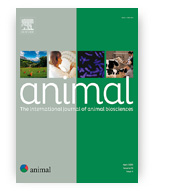
Research papers of the month – August 2023
We present the highest-score research papers of August 2023. These papers have ben published in journals with the highest Ministerial score – 200 points.
Adrian Wysocki; Patryk Czortek; Kamil Konowalik; Jarosław Proćków; Sylwia Wierzcholska
Forest Ecology and Management
Ministerial score = 200.0
Journal Impact Factor (2023) = 3.7 (Q1)
 Functional diversity is widely recognised as the key to understanding the role of ecological mechanisms in shaping the patterns of species co-existence across different environmental gradients. Despite research in this area, there is a considerable knowledge gap on the ecological mechanisms that shape the composition of bryophyte communities, especially those at risk. One of the most endangered group of species are usually woodland specialist bryophytes, therefore, understanding the factors determining their occurrence should be a priority. One of the model species belonging to this group is Dicranum viride, a target species of international conservation importance, and of particular interest for forest managers responsible for forest ecosystems protection. We examined the effect of the tree phorophyte species on the realised niche of D. viride in the temperate forest ecosystems. The specific tree species that D. viride inhabits greatly influences its realised niche. Both phorophyte species we examined, i.e. Fagus sylvatica and Carpinus betulus, can sustain the presence of D. viride, but the key determinant is the availability of suitable microhabitats, such as specific combinations of bryophyte species within bark irregularities. Our findings indicate that even in regions where the effects of forest management are noticeable, the preservation of trees with diverse microhabitats facilitate the existence of rare moss species with D. viride as an example. As a moss with a narrow ecological amplitude, D. viride occurrence patterns can be used as a tool in monitoring studies and for improving forest management strategies aimed at harmonising wood production with the conservation of biodiversity and ecosystem functioning. As a result, this information can be significant for conservation strategies, as it highlights the importance of identifying and preserving certain tree species to protect both particular epiphyte communities and individual target species.
Functional diversity is widely recognised as the key to understanding the role of ecological mechanisms in shaping the patterns of species co-existence across different environmental gradients. Despite research in this area, there is a considerable knowledge gap on the ecological mechanisms that shape the composition of bryophyte communities, especially those at risk. One of the most endangered group of species are usually woodland specialist bryophytes, therefore, understanding the factors determining their occurrence should be a priority. One of the model species belonging to this group is Dicranum viride, a target species of international conservation importance, and of particular interest for forest managers responsible for forest ecosystems protection. We examined the effect of the tree phorophyte species on the realised niche of D. viride in the temperate forest ecosystems. The specific tree species that D. viride inhabits greatly influences its realised niche. Both phorophyte species we examined, i.e. Fagus sylvatica and Carpinus betulus, can sustain the presence of D. viride, but the key determinant is the availability of suitable microhabitats, such as specific combinations of bryophyte species within bark irregularities. Our findings indicate that even in regions where the effects of forest management are noticeable, the preservation of trees with diverse microhabitats facilitate the existence of rare moss species with D. viride as an example. As a moss with a narrow ecological amplitude, D. viride occurrence patterns can be used as a tool in monitoring studies and for improving forest management strategies aimed at harmonising wood production with the conservation of biodiversity and ecosystem functioning. As a result, this information can be significant for conservation strategies, as it highlights the importance of identifying and preserving certain tree species to protect both particular epiphyte communities and individual target species.
DOI:10.1016/j.foreco.2023.121303
J. F. Mee; C. Hayes; Tadeusz Stefaniak; Paulina Jawor
Animal
Ministerial score = 200.0
Journal Impact Factor (2023) = 3.6 (Q1)
 This review of bovine foetal mortality (>42 d gestation) concluded that while the majority of risk factors associated with sporadic loss operate at animal-level, e.g. foetal plurality, those that operate at herd-level, e.g. some foetopathogenic infections, are more likely to result in abortion outbreaks. While the causes of foetal mortality have traditionally been classified as infectious and non-infectious, in fact, the latter category is a diagnosis of exclusion, generally without determination of the non-infectious cause. This review has also established that the traditional dichotomisation of infectious agents into primary and secondary pathogens is based on a flawed premise and these terms should be discontinued. The delicate balance of the maternal gestational immune system between not rejecting the allograft (conceptus) but rejecting (attacking) foetopathogens is stage-of-pregnancy-dependent thus the timing of infection determines the clinical outcome which may result in persistent infection or foetal mortality. Utilisation of our knowledge of the materno-foetal immune responses to foetopathogenic infection has resulted in the development of numerous mono- and polyvalent vaccines for metaphylactic or prophylactic control of bovine foetal mortality. While some of these have been shown to significantly contribute to reducing the risk of both infection and foetal mortality, others have insufficient, or conflicting evidence, on efficacy. However, recent developments in vaccinology, in particular the development of subunit vaccines and those that stimulate local genital tract immunity, show greater promise.
This review of bovine foetal mortality (>42 d gestation) concluded that while the majority of risk factors associated with sporadic loss operate at animal-level, e.g. foetal plurality, those that operate at herd-level, e.g. some foetopathogenic infections, are more likely to result in abortion outbreaks. While the causes of foetal mortality have traditionally been classified as infectious and non-infectious, in fact, the latter category is a diagnosis of exclusion, generally without determination of the non-infectious cause. This review has also established that the traditional dichotomisation of infectious agents into primary and secondary pathogens is based on a flawed premise and these terms should be discontinued. The delicate balance of the maternal gestational immune system between not rejecting the allograft (conceptus) but rejecting (attacking) foetopathogens is stage-of-pregnancy-dependent thus the timing of infection determines the clinical outcome which may result in persistent infection or foetal mortality. Utilisation of our knowledge of the materno-foetal immune responses to foetopathogenic infection has resulted in the development of numerous mono- and polyvalent vaccines for metaphylactic or prophylactic control of bovine foetal mortality. While some of these have been shown to significantly contribute to reducing the risk of both infection and foetal mortality, others have insufficient, or conflicting evidence, on efficacy. However, recent developments in vaccinology, in particular the development of subunit vaccines and those that stimulate local genital tract immunity, show greater promise.
DOI:10.1016/j.animal.2023.100774










